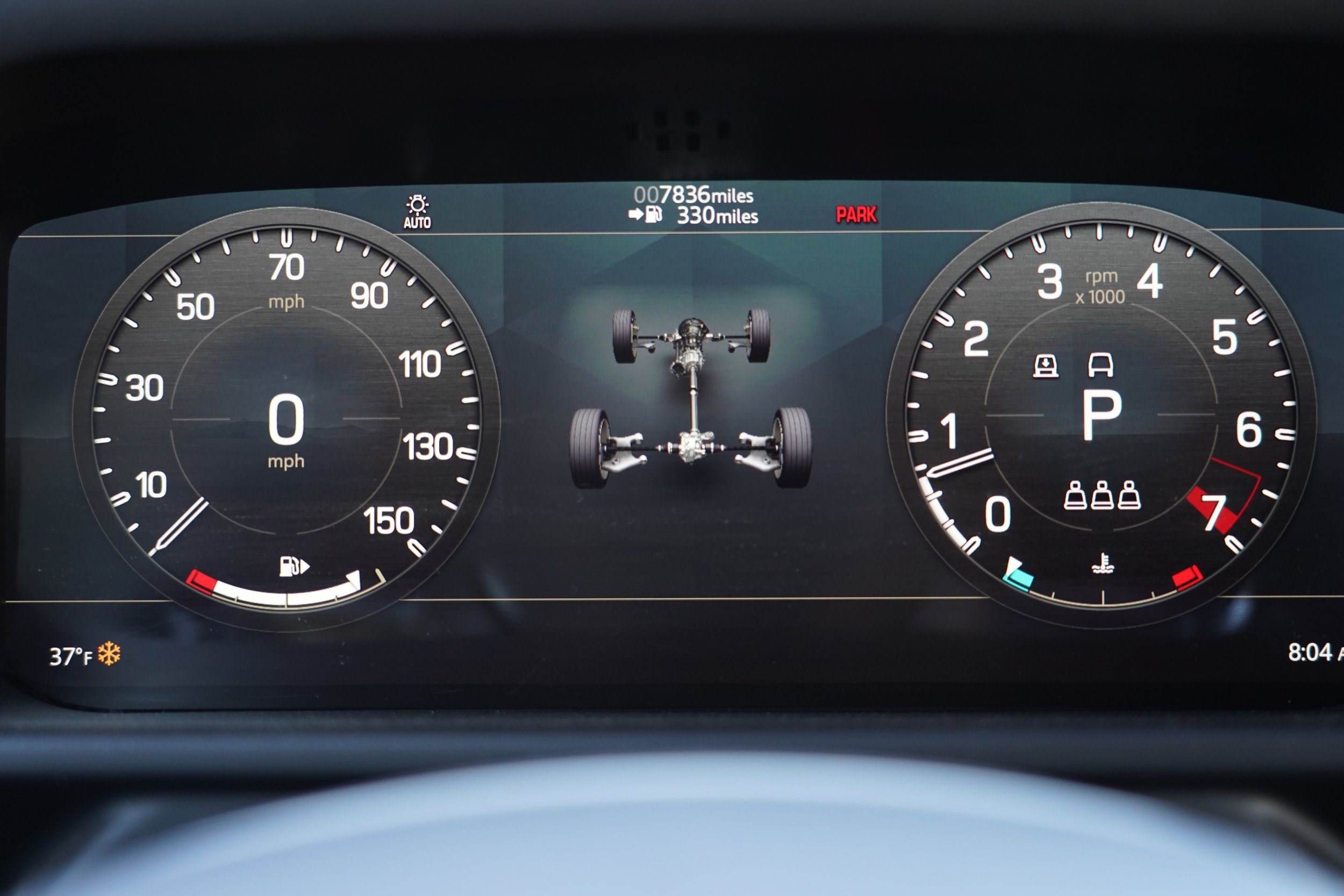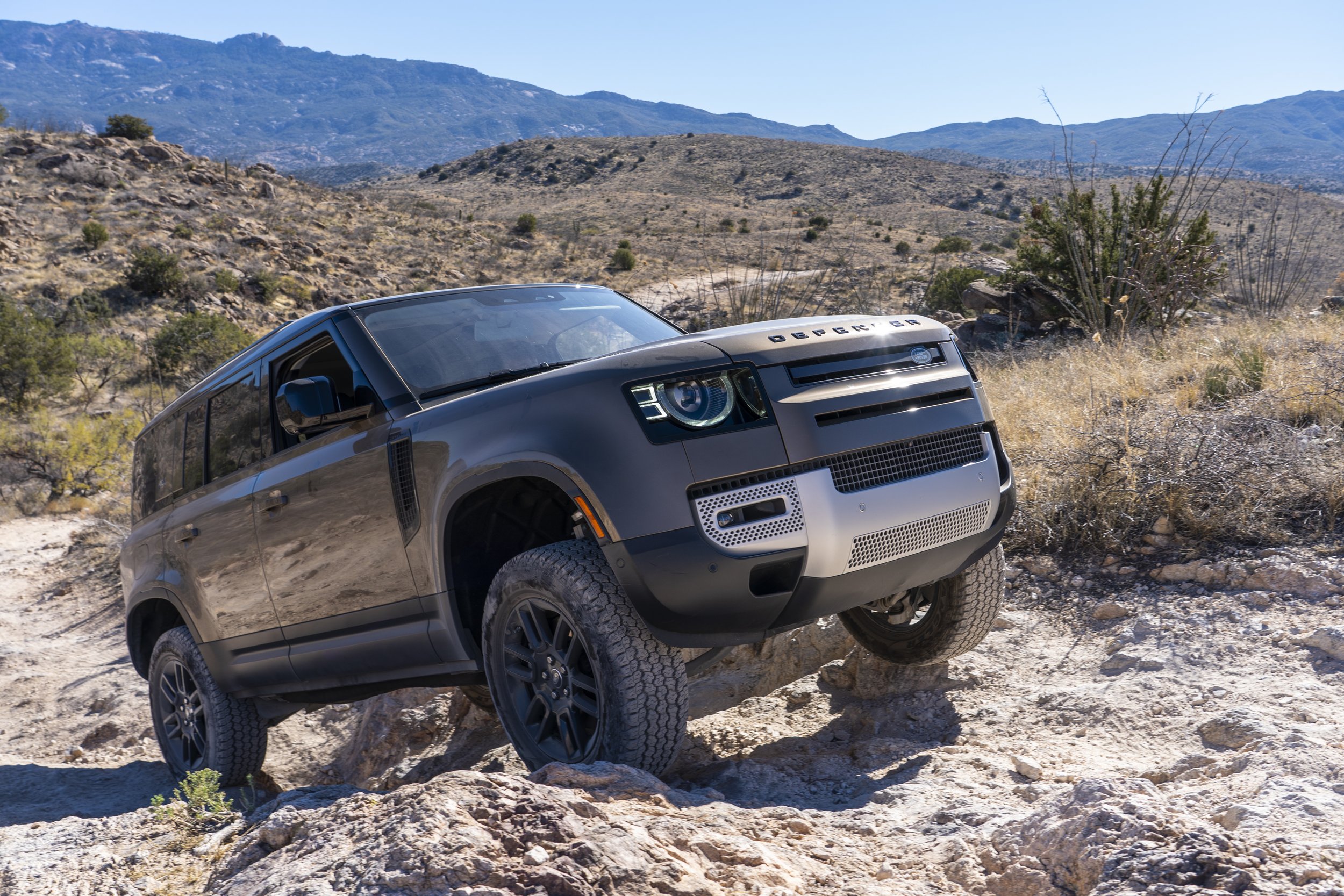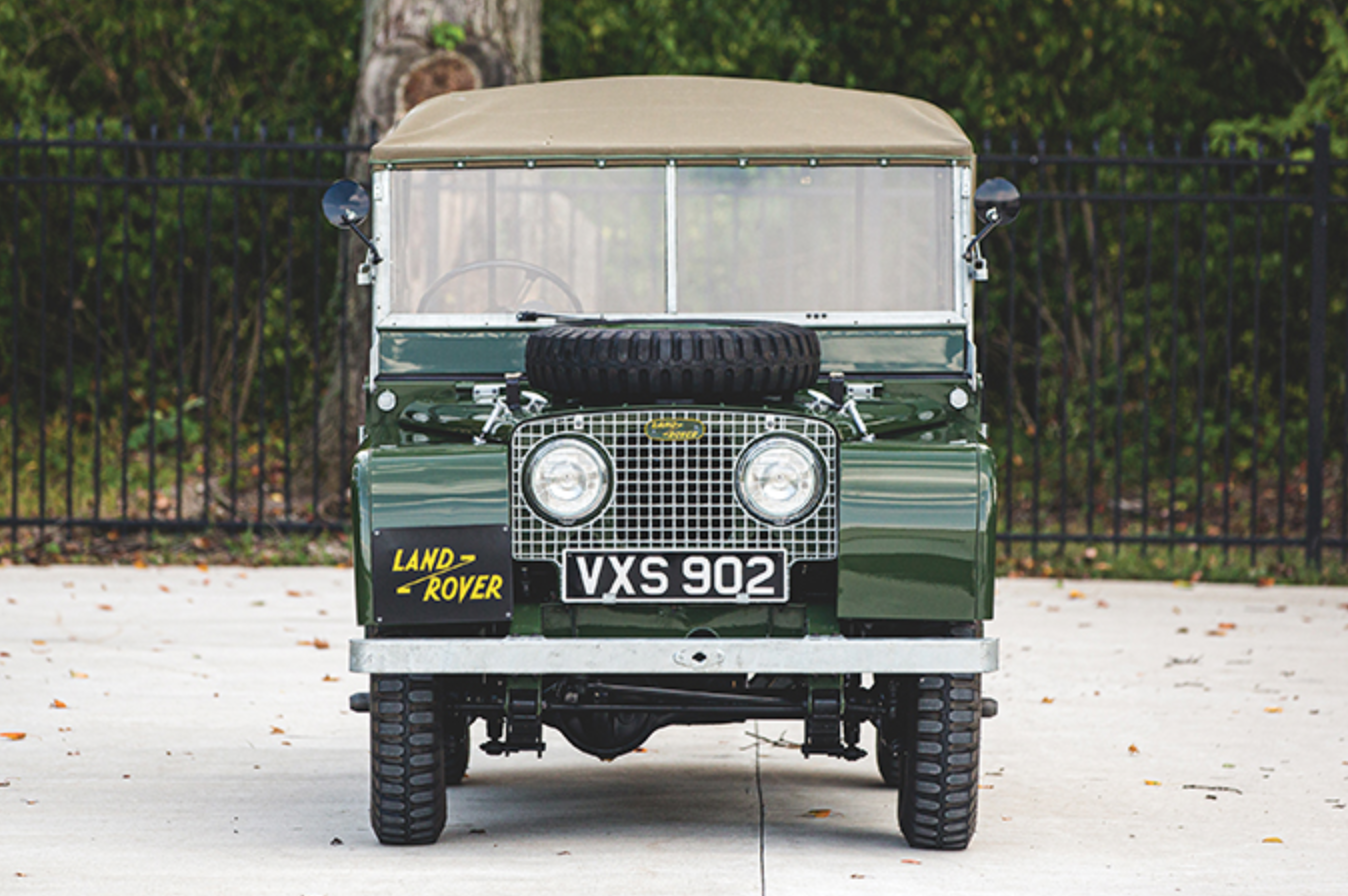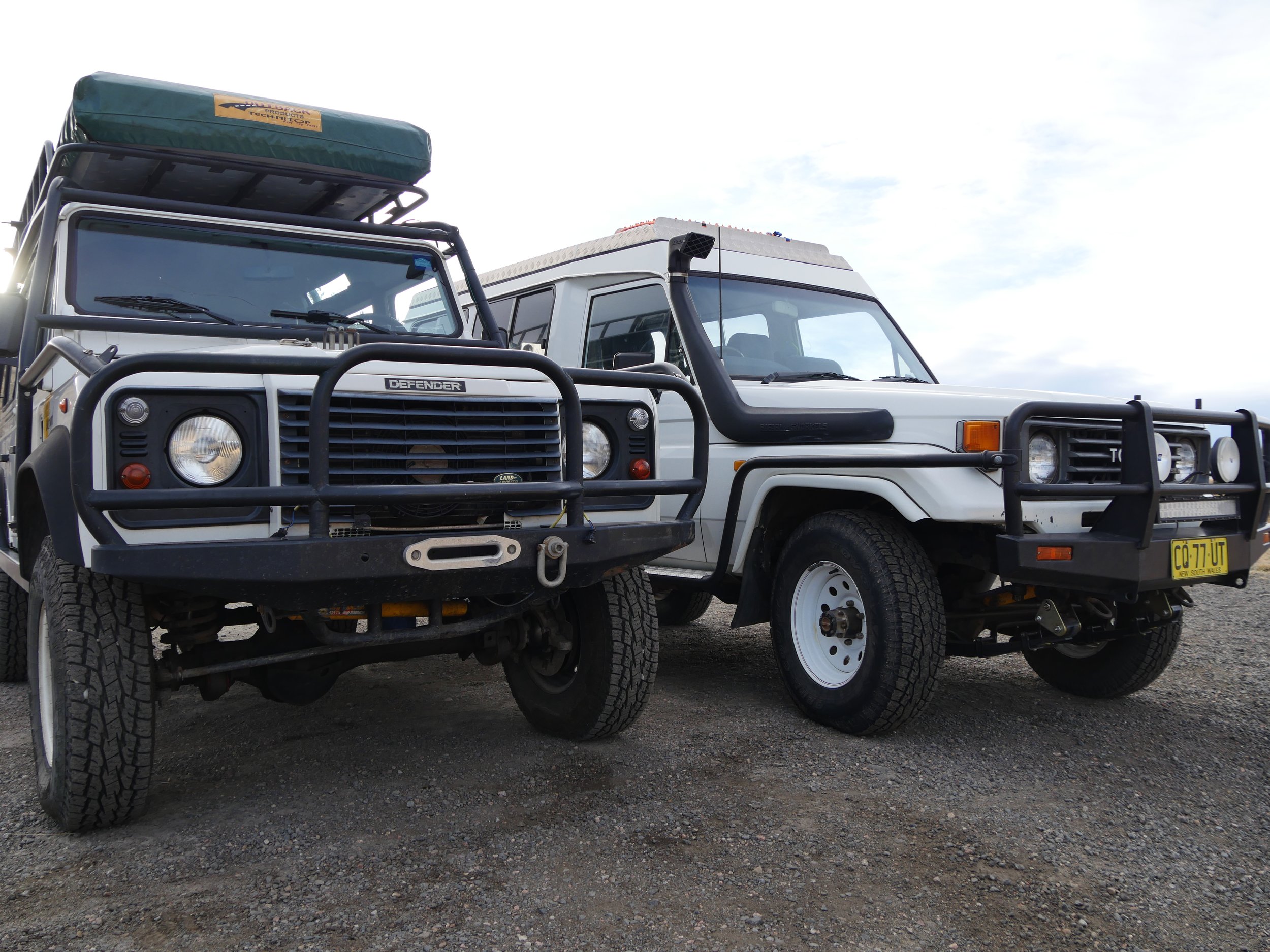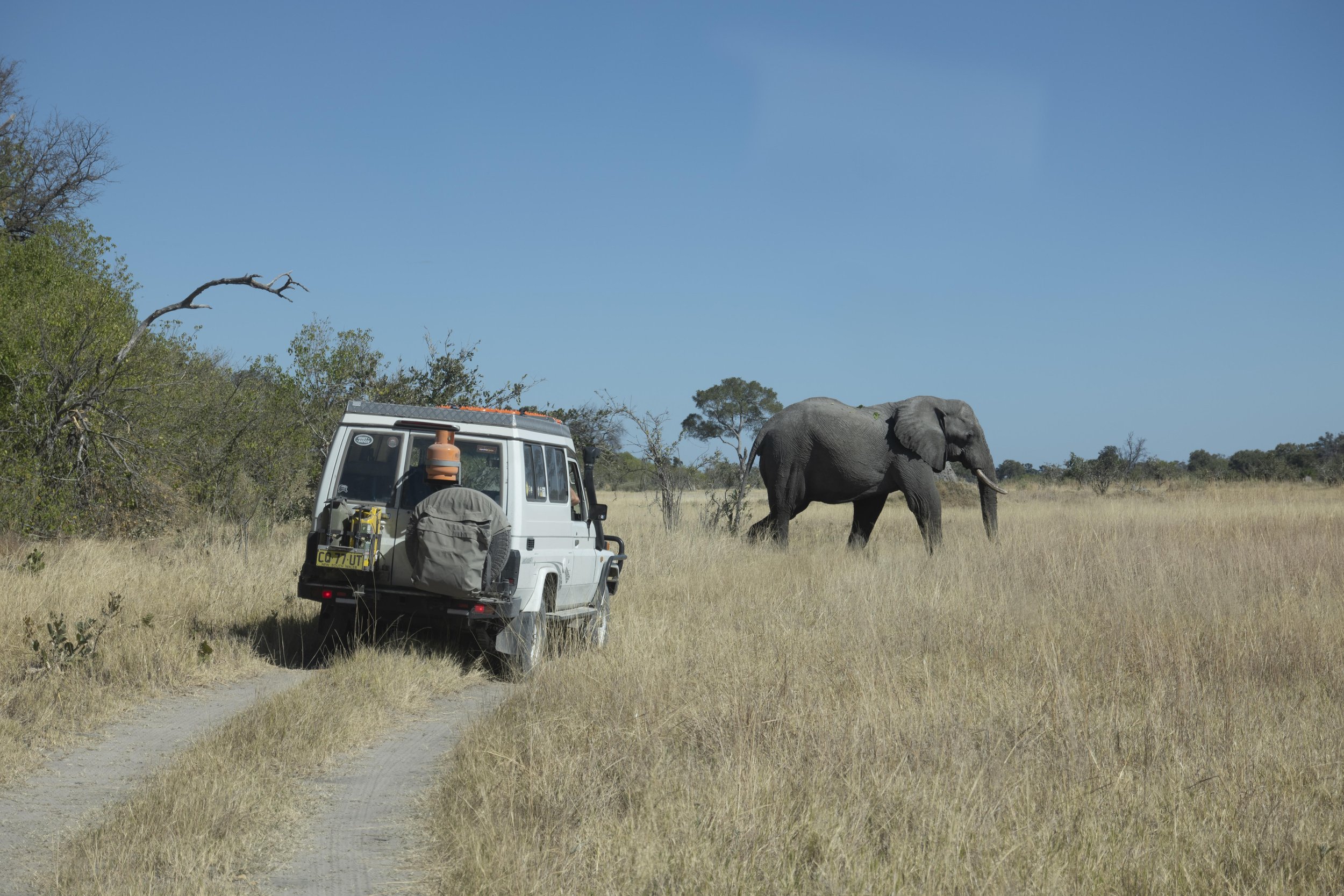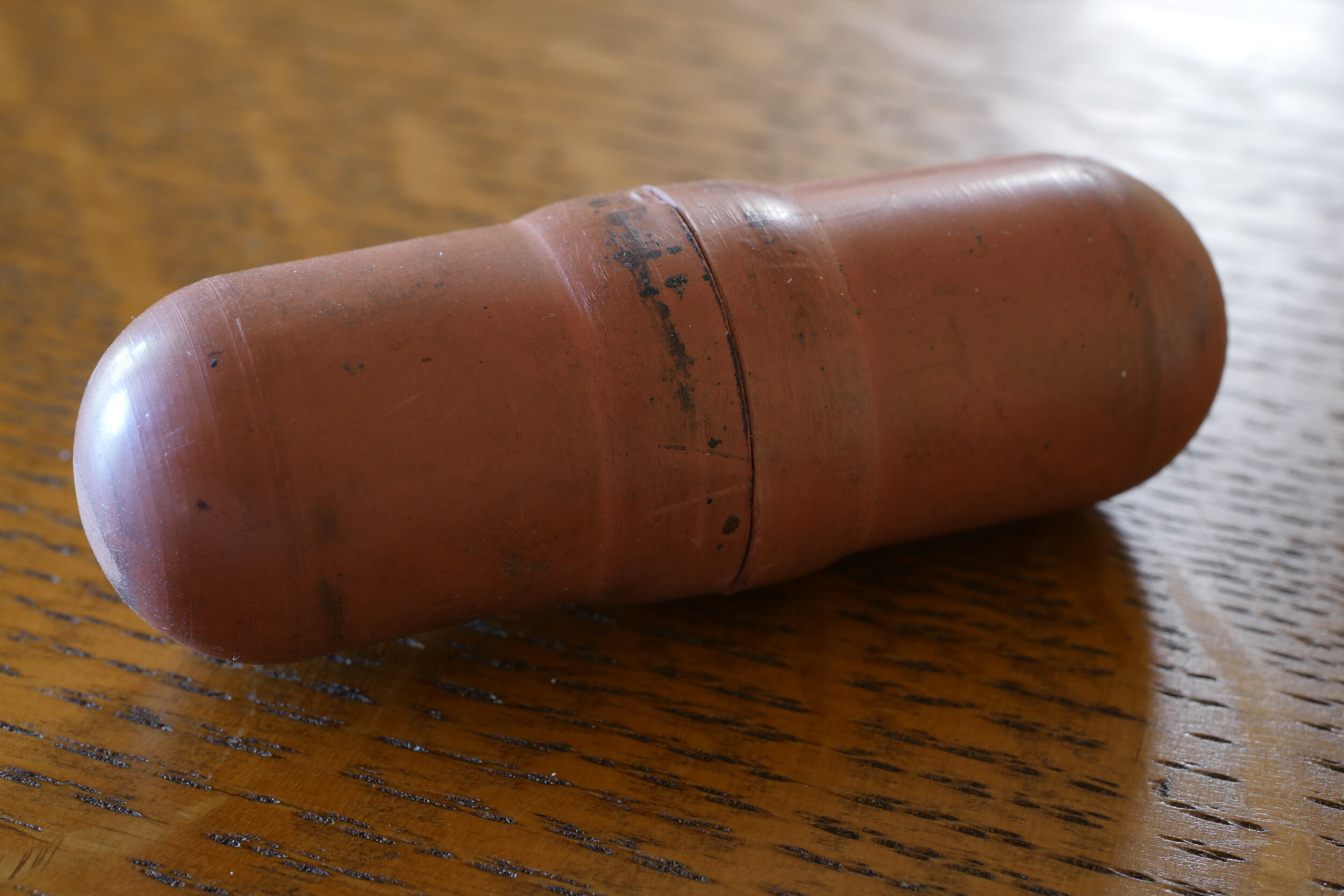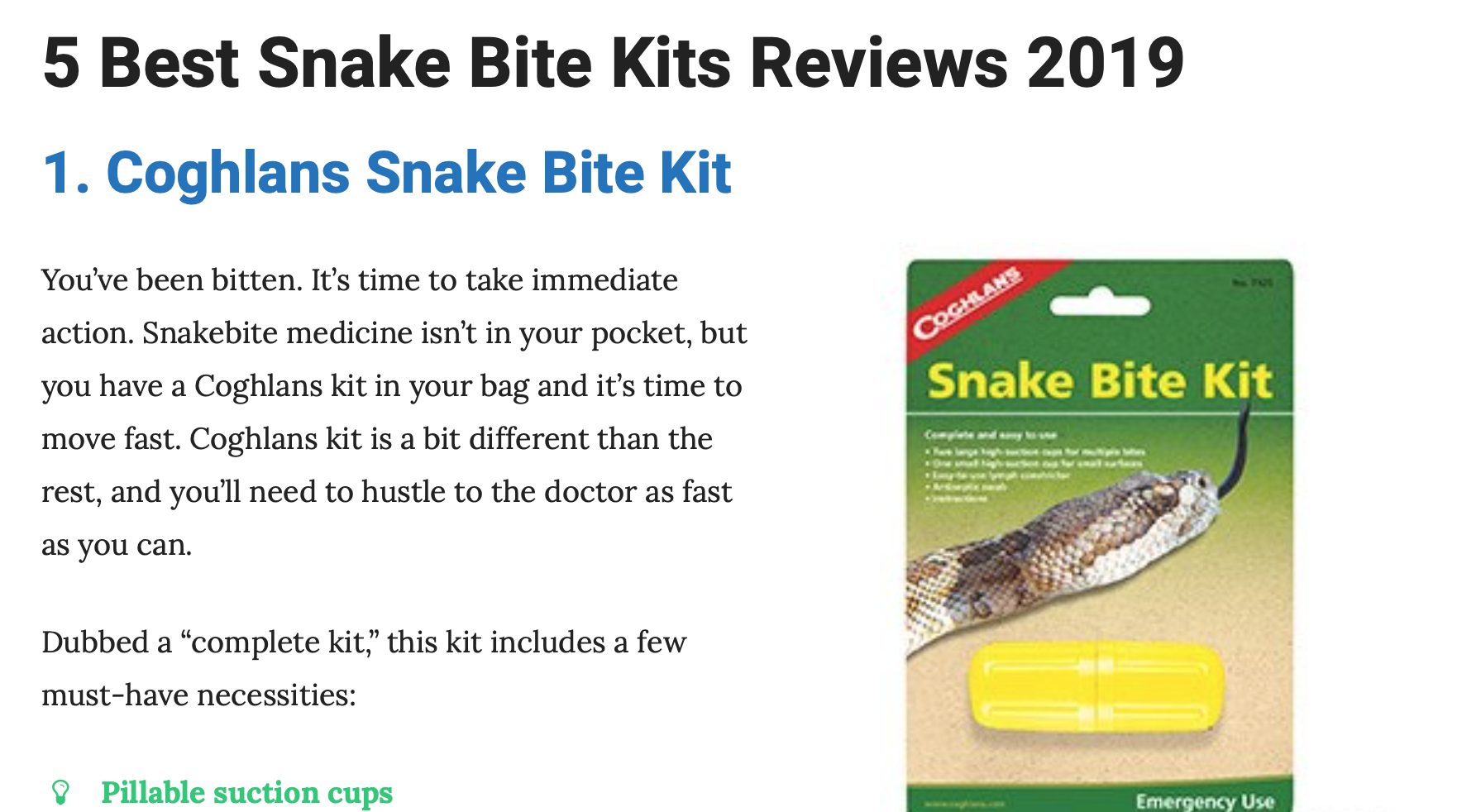
Overland Tech and Travel
Advice from the world's
most experienced overlanders
tests, reviews, opinion, and more
Vintage Dodge Power Wagon camper
Full disclosure: I lifted this maddeningly fractional story off the Maple Leaf Up site, a forum for fans of Canadian military history and equipment. I was looking for ads for or images of early Power Wagons, as part of a review I’m writing for Wheels Afield on a new RAM Power Wagon.
On a page of various PW images I found this. Just the one page of an obviously longer piece, describing in part a fabulous camper built by S. Robert Russell and “his wife,” on a used Power Wagon they bought from a Miami car lot. Look at the features and you’ll see it would stand side by side with the most full-featured of its kind today. The article identifies the truck as “front-wheel drive,” which is clearly a mistake by the writer.
I Googled S. Robert Russell, and “S. Robert Russell Power Wagon,” but found nothing. If anyone else tries and finds the bottom of the rabbit hole, let me know!
This is not your father's Land Rover Defender
(Note: A version of this article originally appeared in Wheels Afield, Spring 2021. I’ve expanded it here, and also included some comparisons to two vehicles potential buyers might also consider, the Wrangler Rubicon and the new Ford Bronco, a Badlands version of which I recently tested. Keep firmly in mind that the Defender costs around $15,000 to $20,000 more than the other two with similar spec, due in large part to its technologically more complex, aluminum-intensive unibody construction and all-independent air suspension.)
A line from my test notes reads: If you need a quick 90-mph sprint to scoot past a paint-scouring dust devil charging the highway ahead of you, the new Land Rover Defender is eager to oblige.
I’m willing to bet that’s the first time you’ve read “quick 90-mph sprint” and “Land Rover Defender” in the same sentence.
I also could have included in that sentence terms such as unibody construction, fully-independent air suspension, 14-way memory heated seats, photo-darkening windscreen, panoramic sunroof, 400-watt Meridian sound system, dual-zone climate control . . . but you get the picture. Stepping from the last iteration of the Land Rover Defender into the new one is like going straight from an Underwood typewriter to a MacBook Pro.
As a fan (and owner) of the original Defender, I was one of approximately eight aficionados worldwide who weren’t enraged at the re-invention of the world’s most famous safari vehicle. I knew it was never going to be another bolted-together oxcart an owner could rebuild—and might well have to—under a mango tree in Zambia. It couldn’t be. Times have changed, and so has Land Rover. The company tacitly ceded the expedition, NGO, and insurgent market to Toyota’s bulletproof 70-series Land Cruiser a couple of decades ago.
At the same time, they were never going to retire the name Defender like some star ball player’s jersey number—it is marketing platinum. Thus the new Defender.
And what to make of it? In the glacially extended run-up to its actual introduction, JLR (Jaguar-Land Rover) claimed the new Defender would eclipse its predecessor in comfort, handling, safety, economy, and power, while also surpassing it in off-road ability—no great feat on the first bits, but challenging indeed to simultaneously achieve the latter. In early January 2021 I finally got a 2020 Defender 110 SE all to myself for four days to prove or disprove those claims (press launches are interesting, but minutely orchestrated to show off all the strengths of a product and none of its flaws).
The first official photos of the new Defender elicited a collective “Eew!” from traditionalists. Despite JLR’s references to numerous “stirring evocations” of the original two-box design, modern aerodynamics and aesthetics have melted the shape into a generic form more likely to be mistaken for a Kia Soul than a Series II. By comparison, any Jeep or Bronco owner brought to 2021 from 1966 would instantly recognize either vehicle.
The rounded edges also have the effect of making the new four-door Defender 110 look decidedly smaller than the old one, despite the fact that it is larger in every dimension except height (and even that with the air suspension fully raised). It’s also heavier.
I got used to the unexceptional styling. I did not get used to the “Martha Stewart sample swatch,” as I called it: the strange body-color square stuck in the middle of the greenhouse. I could picture a couple agonizing over the paint choice on their new Defender. “Okay, how about this one? It’s called, um, Gondwana Stone?” (Don’t laugh—that is the actual name for the color on my test vehicle.) Some gloss black Krylon would fix the sample swatch. At least my ride didn’t sport the bizarre, optional Flintstones-lunchbox “side-mounted gear carriers,” which perform the dual function of hampering rearward vision and compromising aerodynamics.
Any sense of disappointment disappears once you slide into the driver’s seat. The new Defender has what is quite simply the most strikingly elegant dash ever put into a production vehicle. The instrument cluster in front of the driver employs all-LED instrumentation, including the “analogue” tach and speedometer—brilliantly crisp and visible in any conditions, and of course programable to display various functions and gauges. The 10-inch touch-screen in the center of the dash, nestled below an upholstered but structural magnesium beam/grab bar spanning the width of the cockpit, actually looks like it belongs there, in contrast to the stuck-on-iPad look of so many; its graphics are sharp, and function, according to my tech-savvy wife, is intuitive. A pod below houses the stubby shift lever and twin climate control/multi-function knobs. There are a few ergonomic glitches—the gear indicator on the shifter is invisible when you’re actually shifting (although there’s a duplicate next to the tach), the low-range button is oddly tiny in comparison to its importance, and identifying the button to convert one of the climate-control dials to a 4x4 drive-mode selector requires a dive into the 490-page owner’s manual. Quibbles, really—I could sit and admire this dash for hours.
By comparison, the current Wrangler dash is pleasingly robust-looking, and major dials are easily read, but it is far less elegant. The new Ford Bronco’s dash pales in comparison; it’s an awkward mix of round and square dials, although the Bronco’s traction-aid buttons are all in a row in the top center of the dash—a brilliant arrangement and more logical than the Defender’s more cryptic placement.
In back there’s comfortable seating and, more important, a completely flat, rubber-matted load bay with the rear seats folded, perfectly rectangular. Owners under five-ten or so will find it comfortable to sleep side by side as a couple, or solo (diagonally) if you’re taller.
Going back to the Wrangler and Bronco: The former suffers from speakers and other structures that intrude into the load space, especially at the back. The latter has a very usable rectangular load bay, but there is a sharp raised shelf where the back seats lie down. The Defender’s load bay wins easily on space—and load carrying as well: Thanks partly to those adjustable air springs, the Defender will carry 600 pounds more than the Wrangler Rubicon, and almost 800 more than the Bronco.
With the power seat adjusted every way to Sunday, and the tilt/telescope wheel positioned, the promised massive improvement in comfort becomes plain. “Land Rover elbow” is officially an affliction of the past. Push-button-start the 395bhp/407lb.ft. Ingenium 3.0-liter inline six, both electrically supercharged and twin-scroll turbocharged, and backed by ZF’s excellent eight-speed transmission, and it’s also clear no Defender owner will ever again be beaten from a stoplight by a furniture-delivery truck. Zero to 60 in 6.5 seconds puts it level with my old 1982 Porsche 911SC. Yet on a 300-mile mixed highway/dirt road trip we managed a bit over 21mpg on the suggested premium fuel. (Base models come with a four-cylinder 2.0-liter with a mere 300 horsepower.) It’s faster than a Bronco with the 330hp 2.7-liter V6, and way faster than a Wrangler with the 285hp 3.6-liter V6. The Defender also delivers its torque much lower in the rpm band than either, which is better for towing and trail performance.
That highway experience would have been sheer fantasy to any early Defender owner. In “Comfort” mode the all-independent, air-sprung suspension lends the ride of a—dare I say it?—Range Rover, with interior noise levels nearly as quiet. At an 80-mph cruise normal conversation is, well, normal. Passing semis in a vicious side wind elicited not a twitch in the steering wheel. Short of JLR’s own premium models it was the most comfortable on-road experience I’ve ever had in a four-wheel-drive vehicle.
The Wrangler, by comparison, exhibits a much firmer ride, looser steering, and obviously more transmitted road noise. The Bronco I reviewed, riding on the 35-inch Goodyear tires of the Sasquatch Package, also rode much more firmly, and displayed enough tire noise at freeway speeds to make conversation difficult—a disappointing revelation.
So: Full marks to Land Rover on transforming the Defender’s comfort, handling, safety, economy, and power. What about off-road performance?
The Defender is built on a new, aluminum-intensive platform called D7x. Engineered to pass something called, alarmingly, the Extreme Event Test (part of which involves driving repeatedly into a six-inch curb at high speed), it also raises the body of the Defender slightly higher that that of Land Rover’s other models. With the air suspension at its tallest setting, ground clearance below the nearly flat underbody is a full 11.5 inches. Approach and departure angles of the 110 are excellent at 38 and 40 degrees. (I much prefer a departure angle greater than the approach angle—if the front end clears you know the back will.) Breakover angle is also good at 28 degrees. These specs all compare favorably with the corresponding Wrangler (43º/37º/26º) and Bronco (44º/37º/23º), especially in departure angle, and the Defender’s wading depth of 35 inches beats them both (Wrangler, 30”, Bronco 33.5”). Additionally, put the Defender’s Terrain Response selector in Wade Mode and it raises the suspension to its maximum, locks the driveline, displays the water depth on the center screen, and, last but not least, lightly drags the brakes to dry them once you emerge. Impressive.
I dialed in another Terrain Response mode—Rock Crawl—for a day in Redington Pass east of Tucson, along the same route I’d earlier taken a Jeep Gladiator Rubicon diesel. With a 119-inch wheelbase instead of the Gladiator’s 137, the Defender didn’t kiss a single rock, and otherwise went everywhere the Gladiator had gone with its dual lockers and disconnected front anti-roll bar. (I did wish the Defender had the Jeep’s 17-inch wheels rather than the supplied 19-inchers, which reduce sidewall height and don’t allow airing down as much.) Rock Crawl mode locks the center and rear diffs; however, the front is left to make do with brake-actuated traction control, so those tires scrabbled a bit on steep climbs before grabbing. Nevertheless it was clear that the new Defender decisively eclipses the old one in this sort of terrain. The original’s admirable coil-spring compliance simply wouldn’t be able to overcome the lack of any cross-axle locking function. I should note that fuel economy dropped precipitously near to single digits for this run—not unexpected but roughly half what a Gladiator’s turbodiesel managed in the same circumstances.
The Defender has other tricks: ClearSight Ground View, which magically makes the hood disappear in dicey terrain, additional camera modes that lend close-up views of the front wheels or a bird’s-eye perspective. All-Terrain Progress Control allows the driver to dial in a walking pace and concentrate on steering rather than throttle management. And all the while the suspension and silky transmission continued to coddle us. At the end of the day Roseann and I agreed that neither of us had ever experienced a vehicle so comfortable on pavement and at the same time so capable in the backcountry.
However, I’ll state that here the Defender’s 4WD proficiency lags slightly behind its American rivals, largely due to the lack of a front locker and its 19-inch wheels. The Wrangler Rubicon reigns supreme in rough country, with the Bronco perhaps a tick behind. I’d rate the Defender at 90 percent of either of them. One could enhance this by installing the 18-inch wheels that are optional, along with slightly taller tires—but I would be very cautious not to compromise the overall brilliance of the Defender’s capabilities on and off road.
Another factor to consider for some of us is the difficulty of fitting (or finding) aftermarket accessories. Land Rover offers a winch as a factory option, but fitting one later might be nearly impossible for the near future. The last I heard, none of the major players in the 4x4 accessory market (ARB, etc.) is producing a winch bumper or recovery-capable rear bumper.
Of course the 800-pound gorilla lurking in the cargo compartment of the new Defender is the question of reliability. The legendary original was not, shall we say, legendary for this, and the new one is orders of magnitude more complex (quite literally a Macbook Pro versus an Underwood). Time will tell if the new, dedicated plant in Slovakia can exceed the quality of the venerable works in Solihull. One early YouTube saga involving a complete engine failure made a splash for some time, and others have surfaced detailing lesser issues. Only time will give us statistically valuable data.
In a way the baggage of that legendary name is unfortunate. If JLR had named this vehicle anything but Defender, it would have been greeted rapturously by Land Rover fanatics. The rest of us can greet it for what it is: a supremely accomplished 4x4 that is also comfortable for 600-mile freeway days, and capable of carrying nearly a ton of passengers and camping gear, or pulling four tons of trailer. I wouldn’t recommend trying to disassemble it under a mango tree with a hammer and a few spanners, but by every other objective measure the new Defender is a vastly better vehicle than the old one. I, for one, would own one in a heartbeat.
Can we admit the spare tire on the bonnet was a dumb idea?
I would venture to say that no single automotive feature is as widely recognized across the globe as the spare tire on the bonnet of a Land Rover.
The Rolls-Royce “Spirit of Ecstacy” winged lady is certainly in the running. Some might mention, say, the tail fins of a ’57 Chevy. But it’s certain more people have seen that spare tire in person, from the streets of London or New York to the dirt tracks of Kenya or Australia or Nepal.
But, honestly, it was a really dumb idea.
Let me hasten to say that it was much less of a dumb idea as originally configured, with the skinny 6.00 x 16 tires and 5-inch wide wheels standard on Series 1 vehicles. But the arrangement still made raising the bonnet a pain, reduced forward visibility, and presented a challenge in getting the spare off and, worse, getting a potentially muddy punctured tire and wheel back on without scratching or gouging the paint or the Birmabright itself.
Even the 6.00 tire on this Series I blocks forward vision.
With modern wheels and tires—even so modest a fitment as the 235/85 x 16 tires on our 110—near visibility is significantly hampered. Topping out on a steep climb with nothing but a BFG filling your field of vision is not fun. And lifting the bonnet is a genuine heave for anyone not stout of tricep.
Even the modest 235-section tire on our 110 is a problem.
I might also point out that, horizontal on the bonnet, the tire is much more exposed to UV degradation from sun exposure, and to heat from the engine. Finally, I’ll point out that in the event you are rear-ended in your Land Rover, the ramifications of that tire breaking free and coming back through the windshield are not pleasant.
And with wider modern tires it gets a bit ridiculous.
Advantages? Well, er . . . let’s see. It’s quicker to access and doesn’t get as dirty as a spare tucked under the rear chassis. It eliminates the “complexity” of a swingaway carrier, as on the Series Land Rovers’ primary competitor, the 40-Series Land Cruisers. And adding a swingaway carrier on a Series Land Rover is an easy way to obtain two spares for journeys fraught with tire hazards. But really the spare should have been mounted on a swingaway to begin with—perhaps with an optional second spare on the hood.
Anyway . . . it sure does look cool.
Defender 110 and Land Cruiser Troop Carrier: Unobtanium no more
Once unobtanium on U.S. Shores, these two expedition legends can now be had—for a price. Are they worth it?
By Graham Jackson
Images by Graham Jackson, Brian Slobe, and Jonathan Hanson
The images are ubiquitous, in National Geographic, in Geographical, on CNN and BBC, even on the web on Overland Expo and Exploring Overland: two of the most iconic and aspirational expedition vehicles in the world; the Land Rover Defender 110 Station Wagon and the Toyota Land Cruiser 75 Series Troop Carrier (Troopy).
Both come from the same generation, the Defender started production in 1983 (yes, I know, it wasn’t named “Defender” until 1990, but it’s the same vehicle) and the 70 Series (J7) started production in 1984. From that time they became common sights in videos and news reports from the furthest, most adventurous parts of the world. Every wildlife documentary seemed to have a 110 lurking in the background and every natural disaster video report seemed to have a 70 Series on hand. These two vehicles became legends in short order.
But for the longest time neither vehicle was available in the USA. Sure, in 1993 Land Rover imported 500 federalized Defender 110s, which now fetch staggering prices on the used market—a testament to the pent-up demand for this vehicle. Mining companies have imported 75-series Land Cruisers, but they are not road legal and spend most of their lives as workhorses underground, where the incredibly tough conditions means no other vehicle is adequate. Why neither Toyota nor Land Rover took the effort to bring the vehicles into the USA as a major model for sale to the public can only be answered by the penny-pushers and spreadsheet drones at either company.
However, examples from the golden era of these vehicles (mid-1990s) have now reached the 25-year-old mark, making them eligible for private import into the USA. The question is, are they worth it? Should you find a Defender 110SW or 75 Series Troopy and import it into the U.S.? Would either serve well as an overland or expedition vehicle here? Since I own both, I think I can offer some insight.
To be clear, I am referencing only the specific models mentioned. Obviously there are other Land Cruisers and other Defenders, and both marques have massive followings of experts who will call me out on any transgression, so let’s define what we are talking about:
In my opinion, the golden age for these vehicles was the 1990s, and the best of the best were the export models, which is what the UN and aid organizations typically got. For Defenders that means, at its base, the Rest of World (ROW) spec 110 Station Wagon with the 300tdi diesel engine and 5-speed transmission, in white. There are ROW spec pickups, 90s, 130s and 3-door 110s as well, but here we are looking at the Station Wagon, the 110SW. For the Land Cruiser, choosing a spec is even more murky; the J7 line has two model groups, five wheelbases, many body variations, and twenty-two different engines! Here we are looking at the HZJ75, the ‘heavy duty long wheelbase’ with the 1HZ inline 6 cylinder engine and manual 5-speed transmission with the enclosed or ‘troop carrier’ body—also in white. See the chart for specifics.
Analysis
Let’s get this one out of the way: They are both gorgeous. Something about the boxy appearance and the utilitarian stance; they exude confidence and capability even when parked. They are vehicles you cannot step out of and not look back at; like your ultimate crush, they command the eye. I put that solidly in the good list, because their legend is in no small part due to this. If you don’t find your eyes drawn back to the opening picture of this article, then . . . well, I’m surprised you read this far.
The rest of the “good” category pertains to the very utilitarian aspect that makes these vehicles excellent for expeditions and overlanding. Tom Sheppard and Jonathan Hanson have a fantastic comparison of the features in the Vehicle Dependent Expedition Guide, and I’ve included some in the chart here. Both are at the top of the range of available vehicles in terms of payload, in volume and weight, for their size. The Defender can carry a staggering 41 percent of its GVW as payload (with the heavy duty suspension installed), and the Troopy isn’t far behind at 30 percent, while the Troopy has a cavernous load bay at 87 cubic feet compared to the Defender’s at 77 (both with rear seats removed). As great load carriers, they lend themselves exceptionally well to expedition work, capable — with tried-and-true four-wheel-drive systems and suspension — of carrying the load over unforgiving terrain. The 110 has the more comfortable and compliant coil springs coupled with full-time four-wheel-drive, while the 75 has leaf springs and part-time four-wheel-drive with locking hubs—and, in many available examples, factory-optional cross-axle diff locks front and rear. The Land Rover’s fuel capacity is 21 gallons; the Troopy boasts dual tanks carrying a total of 47 gallons. Both come with five-speed transmissions.
Far from sport-utility-vehicles, these are just utility vehicles. No automatic transmissions, no driver aids like stability control or ABS—these are vehicles that have to be driven. They do not handle particularly well on the road, they lean excessively in corners when driven fast, and demand attention. But this is also an advantage. The lack of complex systems and sensors means that field repair is easier, and reliability is better. And no, I’m not going down the Land Rover reliability rabbit hole; Defenders are extremely reliable when cared for well.
Both the 300tdi and the 1HZ are stalwart expedition diesel engines that run on mediocre quality fuel, though the 1HZ is more tolerant. Both have simple mechanical fuel injection and can run on only one wire to the fuel solenoid if required — no computers to get in the way. But that also means they are not clean engines. They will pass 1990s emission standards, but nothing better. The 300tdi is a bit cleaner since it has a turbo, while the 1HZ will serve as an extremely good black fog machine at elevation. Neither are powerful. At 111 HP for the Land Rover and 129 HP for the Toyota, they accelerate slowly and cruise the same way. We will come back to this point later.
Toyota’s ultra-durable 1HZ six-cylinder diesel has been in production for 30 years.
Land Rover’s 300tdi is exceptionally fuel-efficient.
Luxury appointments are sparse, as are electronics. No electric motors in seats, no electric windows; sound systems that are barely able to drown out the noise of the engines and the road. They are not vehicles to drive with one finger at 85 mph while sipping a latte, texting friends, and jamming to tunes. The 75 does have tilt steering and optional electronic door locks, but no remote key fob. The 110 doesn’t even have those bare luxuries. Air conditioning is the one “luxury” shared by both, though some would argue it is a necessity (and it’s only optional for the 110SW). There are no speed sensors and interlocks to stop you shifting the transfer case while on the move and no backup sensors or cameras to help those who neglected to learn how to park or use mirrors. No clutch interlock to stop you starting the engine with the clutch engaged. Again, this speaks to their utilitarian drivability which is also one of their strongest assets. These are not nanny vehicles that assert “safety;” they are vehicles that demand attention, demand driving, and reward you in that you can start in gear when bogged in soft sand, or switch to high range while on the move so long as you double de-clutch.
Stock tire sizes are the same, at 235/85R16 (760R16), one of the most common light truck sizes in the world. Pretty easy to find almost anywhere. Given the simple non-electronic mechanics on both vehicles it is very easy to get them repaired.
The load bays on both models are spacious, sparse and square. Nothing better for building out a living space or a load system for any expedition. Unhampered by plastic trim, carpeting and cup holders, they are blank slates to build up and make your own.
Both vehicles lend themselves to camper conversions.
Which leads us to the two features that makes both of these vehicles so exceptional yet have nothing to do with Toyota or Land Rover. It is the massive aftermarket support in accessories and the equally massive community of owners who are willing to help wherever you go. Because of their highly customizable and modular nature (by design), it is very simple to make a 110 or a 75 your own unique expedition rig. From pop-tops to long-range fuel tanks to water tanks and interiors, to suspensions and underbody protection, both models have excellent support in this regard. The internet is filled with fantastic examples of beautifully outfitted vehicles. This also means that it can be very challenging to find one that is unmolested or even close to stock.
But don’t mistake all my praise to imply that either vehicle is perfect out of the box. One of the reasons that they have such massive aftermarket support is that they are, by all counts, mediocre when stock. Expedition vehicles are a collection of compromises and the 110 and the 75, in stock form, are exceptional in that they are completely un-exceptional. It’s like getting the highest quality blank notebook, with the finest acid-free paper and the most beautiful leather cover, case bound, that will last forever. But it is still a blank notebook until you put a few stickers on the outside and then fill it with stories and paintings of your travels to the most remote and beautiful parts of the world.
So . . . are they good for the USA?
In a word, no, I don’t think they are.
But that speaks more to the culture and circumstances of the U.S. than it does to the vehicles. In this country most people get very little time off, and distances are so great that a good portion of any overland adventure is going to be highway time. Neither of these vehicles is good at that. With a comfortable cruising speed of not much above 65 mph, both demand patience; with solid axles and archaic steering geometry, both demand constant attention. Many, many people have purchased a Land Rover Defender after falling in love with the safari image, only to sell it when they discover it is not a modern car, lacks anything close to a creature comfort, and requires diligent maintenance. If it is expected to be a mode of travel for family vacations, strife and frustration are often the result.
With that said, if you are a person with plenty of time who is happy to cruise at 65 mph and enjoy the scenery—and to be fair, there are quite a few who can and do (looking at you Maggie McDermut)—you might live happily with either of these vehicles, and will enjoy looking back at it every time you park and get out. When modified in any of the hundreds of variations possible, up to and including pop-tops, cabinets with sink and stove, hot shower systems, awnings, and more, once in camp they are the equal of any more “modern” vehicle.
Cabinetry turned this Troopy into a mini motor home.
Finally, of course, if you ever do have the opportunity to ship your Defender or Troopy overseas to Africa, Australia, or South America, you will be driving one of the premier choices for extended exploration in the remotest regions of the planet. It will be a notebook in which you can write your own adventures. If such a vision inspires you, I cannot recommend either of these vehicles highly enough.
Graham Jackson is the long-time Director of Training for the Overland Expo, and a founder of 7P Overland, a professional four-wheel-drive training and equipment-supply organization. Their website is here.
The Morgan CX-T . . .
Just in case you thought it was no longer possible to buy an off-pavement vehicle as uncomfortable as an FJ40 or Series III Land Rover . . .
From NewsPress UK:
Morgan unveils the Plus Four CX-T, a car with adventure at its core. A vehicle with capability not yet witnessed on a Morgan sports car, it opens up the possibility of routes, landscapes and destinations inaccessible by Morgan cars until now.
The Morgan Plus Four CX-T is inspired by Morgan’s well documented history of competing in all-terrain endurance trials. As early as 1911, Morgan sports cars were competing and winning in trials competitions, and this spirit of adventure has been key to shaping the Morgan brand ever since. The more adventurous journeys that are frequently undertaken by Morgan customers all over the world have further fuelled the desire for Morgan to imagine the Plus Four CX-T.
Following the launch of the Plus Four in 2020, Morgan partnered with Rally Raid UK, renowned creator of Dakar race cars, to jointly design and engineer the Plus Four CX-T. One of the aims of the project is to demonstrate the capability and durability of Morgan’s new CX-Generation platform, along with the Plus Four upon which the CX-T is based.
Just eight vehicles will be built, priced at £170,000 plus local taxes and supplied in full overland specification, with each customer having the opportunity to work alongside Morgan’s design team to specify their own CX-T. Every Plus Four CX-T is built at Morgan’s factory in Malvern, Worcestershire, before undergoing the final preparation and setup at Rally Raid UK’s own workshop facilities. Morgan’s design and engineering team have worked alongside Rally Raid UK throughout the programme to define the concept, specification, technical attributes, and aesthetic of the model.
More here if you’re intrigued. I am, in a twisted sort of way.
Pinnacle product: the Antiluce latch
Can a tailgate latch with one moving part qualify as a pinnacle product? Absolutely. In fact, that’s exactly why it does.
I’m not sure when the “Antiluce” (get it?) latch was invented—Google suffered a rare fail in not finding me something like an Antiluce Appreciation Society with monthly meetings at the Queen’s Head in Tunbridge Wells. I know they were on Series II Land Rovers because I’ve seen them. Photos of JUE 477, the very first production Land Rover, seem to show a type of Antiluce latch, perhaps refined as production progressed. For all I know it could have been invented decades before that. A small British company named Burrafirm, later purchased by Albert Jagger Limited, seems to have held the patent for quite some time.
The Antiluce is so simple that it would take the proverbial one thousand words to describe it, so if you’re not familiar with it look at the photos and it will be clear. It’s essentially a toggle latch—flip it horizontal to close the tailgate and the hole in the hasp fits over it. Then flip it vertical, push in on the tailgate to snug it against its weather strip, and the stepped opening in the Antiluce automatically takes up the slack and ensures a rattle-free fit. With new weatherstrip the latch might only drop down to the first or second step, but as the weatherstrip beds in or wears, the latch simply drops down a step at a time to maintain consistent tension. Brilliant. Its natural tendency is to obey gravity, so if the tailgate flexes over rough roads the pin will only snug itself, not loosen or come unfastened.
The drop-down tailgate on my FJ40 closes with over-center draw latches, which are bulkier, heavier, fiddlier, and no better. If I ever do a complete restoration on the Land Cruiser I plan to convert it to Antiluce latches. They’re available from numerous sources including all the major Land Rover stores, and could easily be adapted to other uses on custom trailer compartments or cabinetry. The threaded shaft can be had in several lengths, and there are weld-on versions too. At around $30, it’s possibly the cheapest pinnacle product on earth.
The saga of JUE 477, first production Land Rover
A new book published by Porter Press International tells one of the most fascinating and unlikely tales in the history of the Land Rover: the saga of the very first production vehicle, 860001 (the title refers to its registration plate, JUE 477).
The vehicle was intended for presentation to King George VI, but instead wound up working for a living on farms and mining sites. A farmer named David Fairless bought it 22 years later for the estimable sum of £15, and let it sit in a field until 1998, when on a whim he trailered it to the Series 1 Club’s 50th anniversary rally. When the rally’s attendees realized the import of the 860001 serial number Fairless was deluged with offers, and he stashed the Land Rover in a barn. Not until after his death was 860001 sold—to Sir James Ratcliff, a Land Rover aficionado and more recently the founder of Ineos, the soon-to-be manufacturer of the Grenadier, the spiritual successor to the Defender, and by extension, 860001.
The 128-page book by Martin Port contains 240 photographs, from historical images through a complete documentation of JUE 477’s careful restoration.
Porter Press is here.
Classic Kit . . . not. The snake-bite kit.
Jonathan (left, with a crappy homemade snake stick), Bruce Douglas, and Jeff Swanson about to head into the snake-infested hills.
As kids growing up in the Sonoran Desert, my friends and I were always aware of the presence of rattlesnakes in the terrain we hiked and played in. Not that it upset us—far from it. We thought it was the coolest thing possible, along with coral snakes, scorpions, and other, larger coolest things possible, like cougars in the mountains we camped in. We would have been big fans of Doug Peacock’s later observation that, “It’s not wilderness unless there’s something out there that can kill you.” But we knew always to watch where we put our feet and hands, and always to look down before stepping out a door—an instinct so deeply ingrained that I do it when stepping out of a pub in London.
In those early days, if we saw a rattlesnake while on a backpacking trip we usually killed it—it was simply the accepted thing to do then. To be fair, we also usually skinned, roasted, and ate it, so it wasn’t simply murder. Later on we learned a more tolerant attitude—but we never stopped being aware of the possibility that one day you might let down your vigilance, or just have a second of bad luck.
That was okay—because we had snake-bite kits. Identical to the rather alarmingly suppository-esque looking thing shown here.
Cutter (later better known for insect repellent) first produced these in the 1950s as far as I can tell, but by the 1970s they were official Boy Scout items, issued to the military in Vietnam, and eventually copied by several companies such as Coghlans and All-Molded Plastics (the one shown here).
The kit comprised two rubber halves, designed to be suction cups, and a smaller one inside for use on fingers. Also included were scalpel blades, an iodine ampoule, and a cord to use as a tourniquet. According to the instructions, if bitten you were supposed to tie the tourniquet above the bite to restrict circulation, lance each fang mark in a cross pattern with the scalpel blade, then use whichever suction cup was appropriate to suck out the venom. And Bob’s your uncle, right?
Actually, no. It’s fortunate we never had to use one of these things as directed, because we almost certainly would have done more harm than good, especially with that tourniquet, assuming we didn’t lance a major artery, and hadn’t spent a half hour following directions instead of heading for home and a hospital.
Many studies (such as this one, of a much more sophisticated device, the Extractor) have shown that not only do suction devices not remove a remotely significant amount of venom, they can actually delay the healing process by weeks due to severe localized tissue necrosis at the site of application. The best snake-bite kit today is universally recognized as a set of car keys, to get the victim to a hospital for proper treatment with a polyvalent anti-venom. In the U.S., fatality among snake bite victims is well under one-half percent. In fact—I looked this up years ago for a book and verified it—more people in the U.S. die each year from accidentally pulling vending machines over on themselves than die from snake bite. Intriguingly, both types of victims tend to be young males . . .
The good news is, the futility and potential harm from using one of these devices is now common knowledge. No reputable company would think of marketing a product proven to be as ineffectual as blood-letting, lobotomies, and, well:
Or . . . maybe not.
In fact, Coghlans still sells their kit in hardware and outdoor stores across the country. Not only that, but in researching this piece I came across an article on a site called Pestwiki.com titled, “The Five Best Snake Bite Kits for Survival,” published in 2019. Number one? The Coghlan’s kit.
It’s followed by the Extractor (see study above) and several others. Then, after telling us which are the “five best snake bite kits,” they follow it with a sort-of kinda maybe caveat:
Note that bit, “ . . . they do remove some fluid but extract much venom.” Typo? If so it’s a doozy.
Postscript: By the time I was 14 or 15 I’d given up killing rattlesnakes, and instead was keeping them in cages in my bedroom, right under the nose of my stepfather, who would have put me out in the street if he’d found out.
Much more fun than eating them.
Hint: When using “Search,” if nothing comes up, reload the page, this usually works. Also, our “Comment” button is on strike thanks to Squarespace, which is proving to be difficult to use! Please email me with comments!
Overland Tech & Travel brings you in-depth overland equipment tests, reviews, news, travel tips, & stories from the best overlanding experts on the planet. Follow or subscribe (below) to keep up to date.
Have a question for Jonathan? Send him an email [click here].
SUBSCRIBE
CLICK HERE to subscribe to Jonathan’s email list; we send once or twice a month, usually Sunday morning for your weekend reading pleasure.
Overland Tech and Travel is curated by Jonathan Hanson, co-founder and former co-owner of the Overland Expo. Jonathan segued from a misspent youth almost directly into a misspent adulthood, cleverly sidestepping any chance of a normal career track or a secure retirement by becoming a freelance writer, working for Outside, National Geographic Adventure, and nearly two dozen other publications. He co-founded Overland Journal in 2007 and was its executive editor until 2011, when he left and sold his shares in the company. His travels encompass explorations on land and sea on six continents, by foot, bicycle, sea kayak, motorcycle, and four-wheel-drive vehicle. He has published a dozen books, several with his wife, Roseann Hanson, gaining several obscure non-cash awards along the way, and is the co-author of the fourth edition of Tom Sheppard's overlanding bible, the Vehicle-dependent Expedition Guide.





